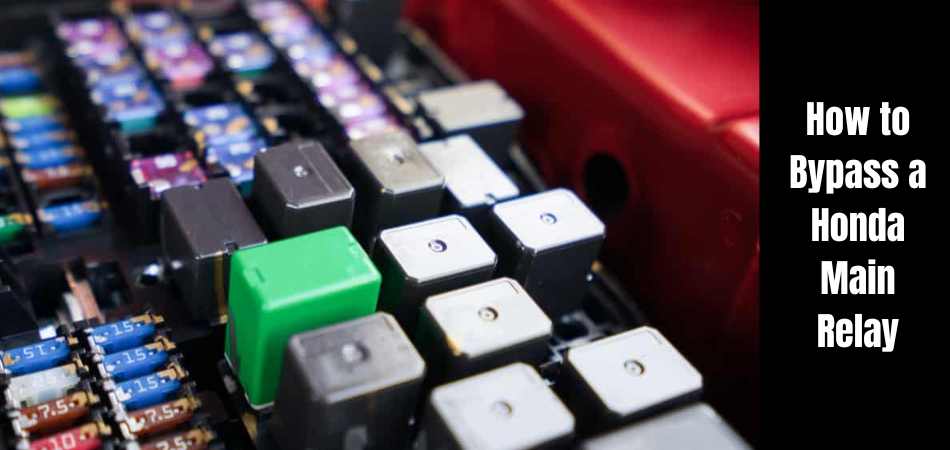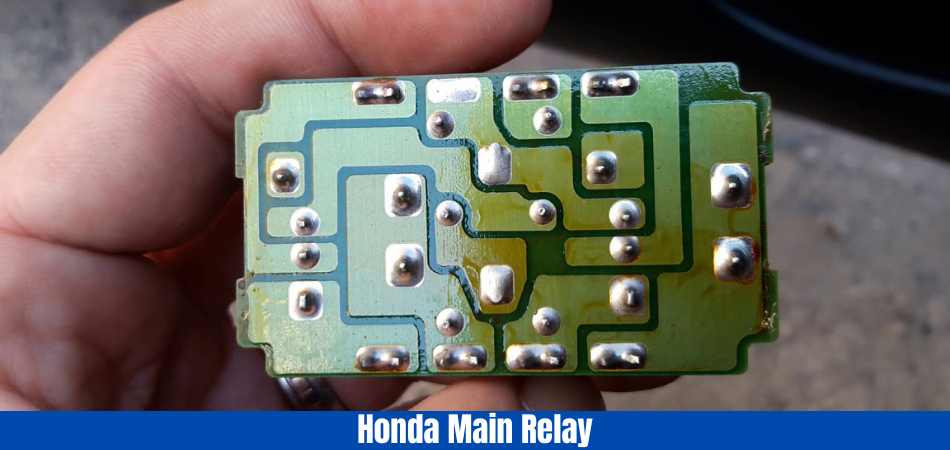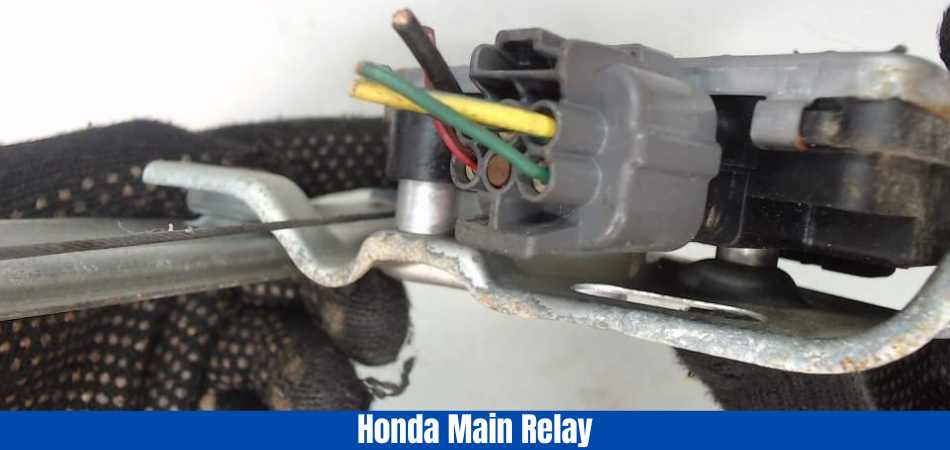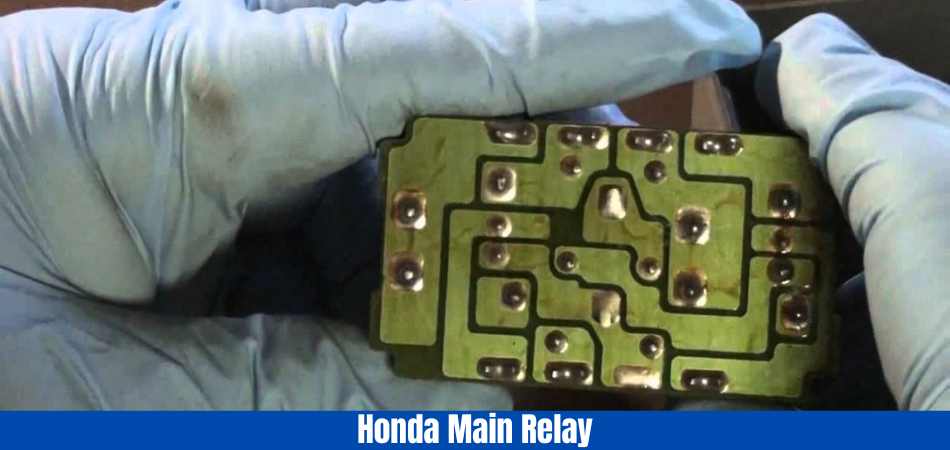
A primary relay is an essential part of your vehicle’s electrical system. It regulates power to the fuel pump, ignition system, and other critical components of your car. When it fails, it might cause your vehicle to stall or not start at all.
In this article, we will show you how to bypass a Honda main relay if you have any issues with it. By skipping a trip to the mechanic, this easy remedy can save you time and money.
What is the Main Relay?
Before we get started on bypassing a Honda main relay, it’s vital to understand its function and position. The primary relay is normally positioned under the dashboard on the driver’s side, near the steering column.
It is in charge of receiving a signal from the ignition switch and providing electricity to various components in your vehicle. When you start your car, the main relay activates and delivers electricity to the gasoline pump, which in turn supplies fuel to your engine.
What is the Importance of the Main Relay?
The main relay in your Honda vehicle is critical because it plays a significant role in the start-up process. It guarantees that your engine has all of the components it needs to perform smoothly and efficiently.
When you turn on your ignition, the primary relay begins the process of starting your engine. It delivers a signal to the fuel pump, instructing it to start the engine. It also regulates the power supply to the ignition system, which is in charge of sparking the fuel-air mixture in your engine.
A defective main relay can prevent your automobile from starting or cause it to stall while driving. As a result, knowing how to bypass a primary relay is a useful ability for any Honda owner.
What are the Signs of a Faulty Main Relay?
It is critical to identify the symptoms of a defective main relay as soon as possible in order to avoid car failures or costly repairs. The following are more detailed descriptions of the most prevalent symptoms:
- The most prevalent indicator is that the car would not start. You can turn the key in the ignition, but the vehicle will not start. The engine may attempt to start, but will be unable to do so, or it may stop cranking entirely.
- Driving While Stalling: This can be quite dangerous, especially if it occurs at high speeds. The vehicle may suddenly lose power and stall. This is because the primary relay sporadically cuts power to the gasoline pump while the car is running.
- Intermittent Starting Problems: The car may start normally at times and not at others. This could indicate a faulty primary relay. The problem is more likely to occur on hotter days, as Honda primary relays are known to have temperature-related concerns.
- When Turning On The Ignition, There Is A Clicking Sound: This sound indicates that the main relay is most likely failing. When you hear this click, it usually implies that the primary relay is unable to maintain power to the starter solenoid, preventing the engine from starting.
- Sudden Loss of Power While Driving: This symptom can make it appear as if the car is out of petrol. It may sputter before returning to normal operation, only to lose power again.
Remember that if you detect any of these symptoms, it’s time to inspect your main relay. Detecting the problem early might save you money on future repairs or replacements.
What are the Steps for Bypassing the Main Relay?
Now, on to the main point: how to bypass a Honda main relay. Please keep in mind that this is only a temporary treatment and should not be utilised as a long-term solution. A trained mechanic should always replace your primary relay.

- Locate the Main Relay – As previously stated, the main relay is typically located under the dashboard on the driver’s side. To get to it, you may need to remove various panels or coverings.
- Identify the Power and Ground Wires – The primary relay contains four wires, but you only need to pay attention to two of them: the power (typically red) and ground (usually black).
- Cut the Power Wire – Carefully cut the power wire in half with a pair of wire cutters.
- Remove about an inch of insulation from both ends of the cut power cable with a wire remover.
- Connect the Wires – Twist the two ends of the cut power line together. Then, to secure the exposed wires, wrap electrical tape around them.
- Test Your Car – Start your car by turning on the ignition. If so, you’ve successfully circumvented the primary relay.
- Reconnect the Main Relay – Once you’ve checked that your car starts, you can reconnect the main relay and replace any removed panels or covers.
Keep in mind that this is simply a temporary fix, and you should replace your primary relay as soon as possible. Bypassing the primary relay can create other electrical problems in your car, so only use this procedure in an emergency.
Tips for Diagnosing Main Relay Issues
Diagnosing a main relay problem can be difficult at times, especially when the symptoms might mimic other automotive problems. Here are some pointers to assist you correctly detect a primary relay problem:
- First, go over the fundamentals: Check other fundamental components first before concluding that the primary relay is the source of the problem. Check that the battery is in good working order and that the engine oil level is adequate.
- Keep an ear out for clicking sounds: Listen for a clicking sound when you start the engine. If you hear one, it’s a sure sign that the primary relay is failing.
- Test at Various Temperatures: Honda main relays are known to suffer temperature-related difficulties. To see if the problem persists, try starting your car in different weather conditions. If the car starts when the temperature is mild but struggles when it’s hot, it’s a sign of a malfunctioning primary relay.
- Inspect for Physical Damage: Sometimes a visual inspection of the main relay will uncover the problem. Examine the relay for signs of overheating, charred marks, or any form of physical damage.
- Test the Main Relay: If you’re confident with a multimeter, you can do a continuity test on the main relay. This might indicate whether or not the circuits within the primary relay are functioning properly.
- Remember that bypassing the primary relay is simply a short-term option. If you’re having recurring problems with your vehicle, you should always take it to a skilled mechanic for a thorough analysis and repair.
What is The Importance of Professional Repair?
While knowing how to bypass a Honda main relay and other auto DIY abilities can come in handy in an emergency, it is critical to recognise the need of professional repair services.

Trained mechanics have the knowledge and instruments to correctly diagnose the underlying cause of a problem, which may not always be obvious to the untrained eye. They can also conduct difficult repairs that most car owners are incapable of. Attempting to undertake these repairs on your own may result in further damage, resulting in more expensive repairs down the road.
Furthermore, skilled mechanics are up to date on the latest innovations in automotive technology, ensuring that your vehicle receives the best possible care. Finally, having your automobile professionally serviced frequently comes with a service guarantee, which provides you with an added layer of security if the problem reoccurs.
It’s important to remember that safety should always come first, and professional repairs are a guaranteed method to accomplish that.
What are the Precautions for Bypassing the Main Relay?
- While bypassing the primary relay in a Honda is a quick fix, it’s critical to take the required safeguards. Consider the following guidelines:
- First and foremost, safety: Before attempting to bypass the main relay, always ensure that the vehicle is in ‘Park’ or ‘Neutral’ and that the emergency brake is engaged.
- unplug the Battery: To avoid any unexpected short circuits, unplug the negative connection of the battery before doing any electrical work on your vehicle.
- Use the Right Tools: It is critical to use the proper tools for the job. Wire cutters and strippers must be used correctly. Makeshift tools should not be used since they can cause damage or injury.
- Avoid Long-Term Use: Remember that bypassing the primary relay is only a temporary solution. Prolonged use of the car in this condition can result in serious electrical problems.
- Secure Loose cables: Make sure all cables are properly connected and taped together. Loose wiring can create extra issues and even deadly situations.
- Professional Help: If you are unfamiliar or uncomfortable with electrical systems, it is recommended to get professional help. Attempting to bypass the primary relay without appropriate understanding can result in harm to your vehicle’s electrical system.
- Always remember, safety and correct technique should never be compromised while dealing with auto maintenance.
What is the Cost of Bypassing the Main Relay?
While bypassing the main relay may appear to be a quick fix, there are various factors to consider. First, if you’re unfamiliar with such operations, the time investment in circumventing the primary relay can be significant.

You also risk inflicting extra harm to the vehicle’s electrical system, which could result in more severe and costly repairs later on. Furthermore, driving a car with a bypassed primary relay might result in low fuel efficiency and higher gasoline expenses.
Finally, if the bypassed main relay produces a significant electrical problem while you’re driving, it could result in an accident, endangering your safety and perhaps costing you thousands of dollars in medical costs and legal fees.
As a result, while bypassing the main relay may appear cost-effective in the near term, it should only be utilised as a temporary expedient in emergency situations. A faulty main relay should always be changed by a professional, as this is a more long-term and safe option.
What are the Necessary Tools and Instruments for Bypassing the Main Relay?
Bypassing a primary relay necessitates the use of specific tools and instruments. Here’s a list of what you’ll need:
- Multimeter: When working with electrical components, a multimeter comes in handy. It can be used to test the primary relay for continuity as well as to confirm that the proper voltage is present.
- Wire Strippers and Cutters: These are required for cutting and prepping the wires for the bypass.
- Tape Electrical: Electrical tape will be required to insulate your connections. It’s a smart approach to keep the bypassed region safe from short circuits and electrical fires.
- Soldering Iron and Solder: To make a more lasting and secure connection, solder the wires together.
- Wire Replacement: To make the bypass, you’ll need some extra cables.
- Protective Equipment: To protect yourself from electrical shocks and sparks that may occur during the process, wear safety goggles and insulated gloves.
Remember, if you are unsure or uncomfortable with the process, it is best to seek professional assistance. It’s not worth jeopardising your safety or inflicting additional harm to your vehicle.
Conclusion
Knowing how to bypass a Honda main relay can be useful when dealing with an unexpected automotive problem. However, it’s always recommended to have your main relay replaced by a professional mechanic for long-term reliability and safety.
I hope you found this blog post useful, and that you now have a better grasp of the main relay and how to bypass it in an emergency. Stay tuned to my blog for more helpful hints and tricks. Have a safe and enjoyable drive! # Bypassing a Honda Main Relay.
FAQs
Is it safe to bypass a Honda vehicle’s primary relay?
It is a transient diagnostic procedure to bypass the main relay. So, It should not be used as a long-term remedy because it can have an impact on the vehicle’s safety features and general performance. It is critical to address the underlying cause of the problem.
What equipment and supplies will I require to bypass the Honda main relay?
A wire or jumper wire, a screwdriver or pliers, and a rudimentary understanding of electrical connections are usually required. The exact tools needed will depend on the model of your vehicle.
How can I find the primary relay in my Honda?
The main relay is frequently found under the driver’s side dashboard or in the engine compartment, near the fuse box. For accurate location information, consult your vehicle’s service manual.
What is the procedure for bypassing the Honda main relay?
Depending on the Honda model and year, the technique may differ. In general, you’ll need to identify the relay, remove it, and connect certain terminals with a jumper wire. Follow the instructions in your service manual at all times.
Can bypassing the primary relay harm or endanger my vehicle?
If done correctly, temporarily bypassing the primary relay should not cause any damage to your vehicle. However, because it may interfere with some safety features, it should be used exclusively for diagnostic purposes.
What should I check for after bypassing the primary relay to determine the problem?
Check to see if your vehicle starts and runs normally after skipping the relay. If it does, the problem could be with the primary relay. Make certain to identify and resolve the underlying issue.
How long should a Honda main relay last, and when should it be replaced?
A main relay’s lifespan varies, although they do wear out over time. If you have starting or stalling issues, you should inspect and maybe replace the relay.










Leave a Reply